GOPIZZA started as a food truck – 8 yrs in, it grew to become the 3rd largest pizza chain in S’pore
Across Asia, the pizza chain runs 200 stores and aims to increase this figure to over 500 within the year.
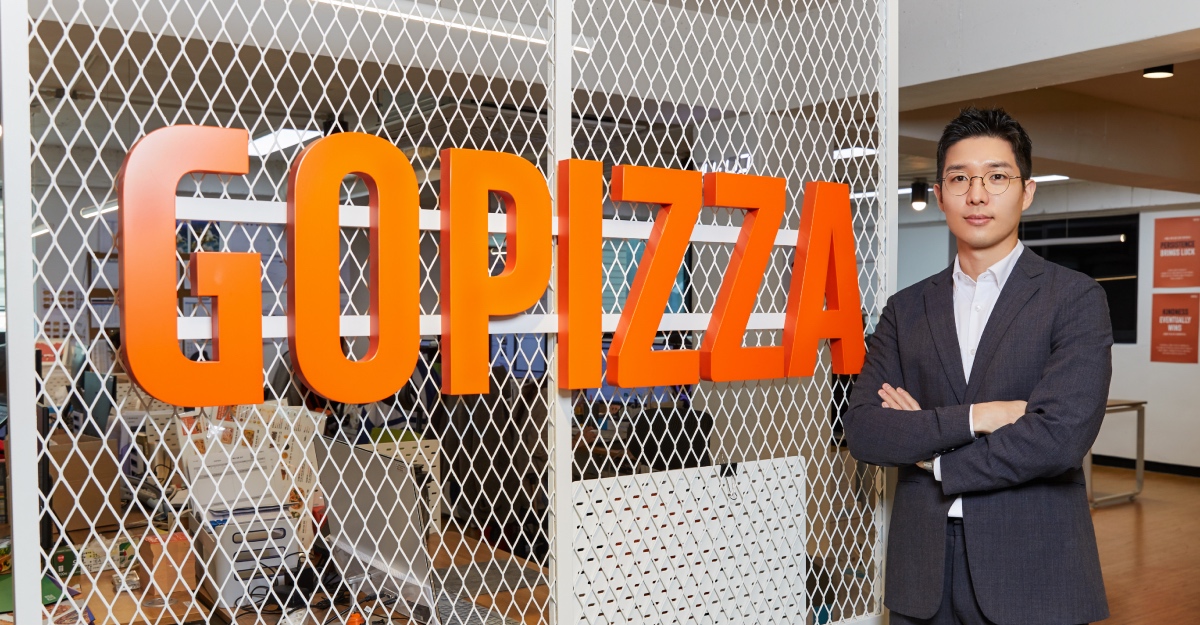
Back when Jay Lim was pursuing his bachelors degree, he recalled shelling out S$20 to S$30 for buy one get one free pizzas, which he found to be “illogical”.
Adding to the exorbitant price, delivery times also stretched over an hour, and he was sure to be left with a surplus every time as he lived alone.
His frustrations led to the inception of South Korean pizza chain GOPIZZA in 2016, with a goal to revolutionise the pizza industry in terms to speed, labour use and space efficiency using automation and artificial intelligence (AI).
I envisioned creating the McDonald’s of pizza—a concept emphasising affordability, speed, and personal-sized portions.
– Jay Lim, founder and CEO, GOPIZZAGOPIZZA first expanded to Singapore in 2020, and since then, the firm has grown to become the third largest pizza chain in the city-state by store count.
According to Jay, demand for its pizzas are driven by trends including an increase in single-person households, rising costs of living, and a post-pandemic labor crunch.
But as with any journey to success, the path wasn’t without its challenges. Here’s a look at the firm’s humble beginnings and how it managed to propel itself to its current heights over the past eight years.
GOPIZZA started out as a food truck
When GOPIZZA first started out, it faced significant challenges in securing funding. “The F&B industry often isn’t a top choice for venture capitals. At the time, I was just a 26-year-old, without money, network, or experience,” said Jay.
To keep the startup lean, he operated the business out of a food truck at the Yeouido Night Goblin Market in Seoul, which required around US$20,000 to launch.
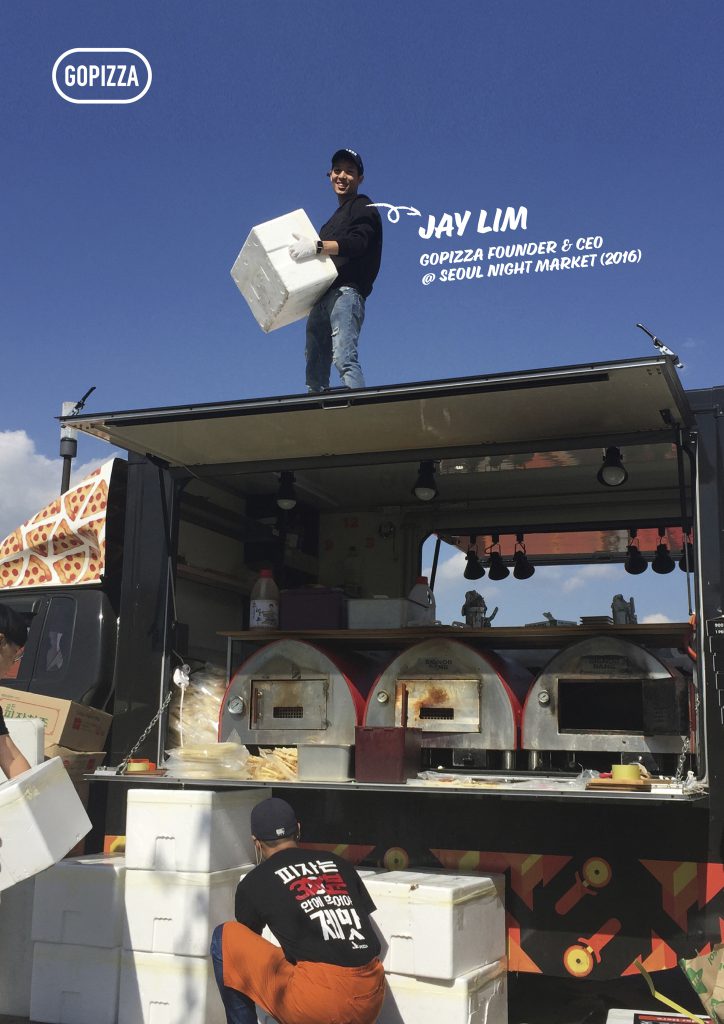 A 26-year-old Jay Lim setting up a GOPIZZA food truck at the Yeouido Night Goblin Market, Seoul, in 2016/ Image Credit: GOPIZZA
A 26-year-old Jay Lim setting up a GOPIZZA food truck at the Yeouido Night Goblin Market, Seoul, in 2016/ Image Credit: GOPIZZABut things quickly took a positive turn for the business from then on. At the launch of GOPIZZA’s first food truck, the response was overwhelmingly positive, with the business selling about 250 pizzas each night.
Recognising the huge demand, he felt the need to turn towards innovation to better the business’ processes and serve more customers, including swapping regular pizza dough for parbaked dough and using an automated oven.
GOPIZZA’s parbaked dough is pre-baked and frozen, allowing the business to eliminate kneading and prepare pizzas in a shorter amount of time, while the automated oven increases cooking speed.
In six to seven months, the business’ sales skyrocketed to 800 to 900 pizzas per night, marking the beginning of GOPIZZA’s success.
Eight years on, it has established 200 stores in seven markets in Asia, and aims to increase the number of stores to over 500 within the year. In Singapore, it runs 27 outlets, having opened six new stores in December alone.
Integrating AI and robotics into F&B
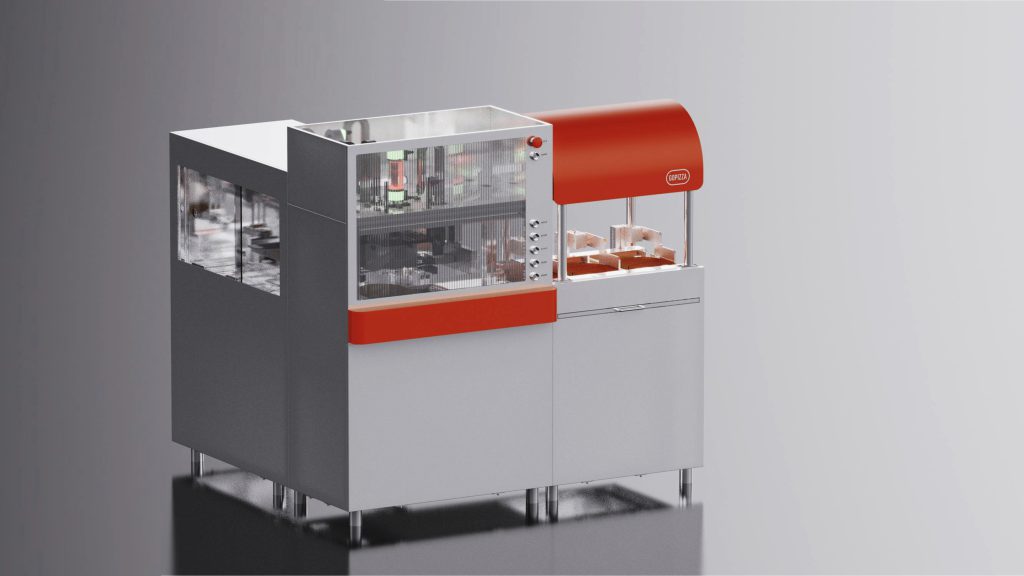 The GOBOT station assists staff with a multitude of tasks, including slicing pizzas/ Image Credit: GOPIZZA
The GOBOT station assists staff with a multitude of tasks, including slicing pizzas/ Image Credit: GOPIZZAToday, GOPIZZA utilises various technologies spanning across robotics, automation and AI, completely transforming its operations by enhancing speed, optimising labor utilisation, and maximising space efficiency.
The company’s parbaked dough has gone through various iterations over the years, seeing significant improvements in its taste, convenience, cost-effectiveness and storage ease.
Similarly, its automated oven has also been upgraded—its heat penetration technology increases heat efficiency by twice as much when compared to normal ovens. These technologies allow each GOPIZZA to be prepared 3 times faster than a regular, conventional pizza.
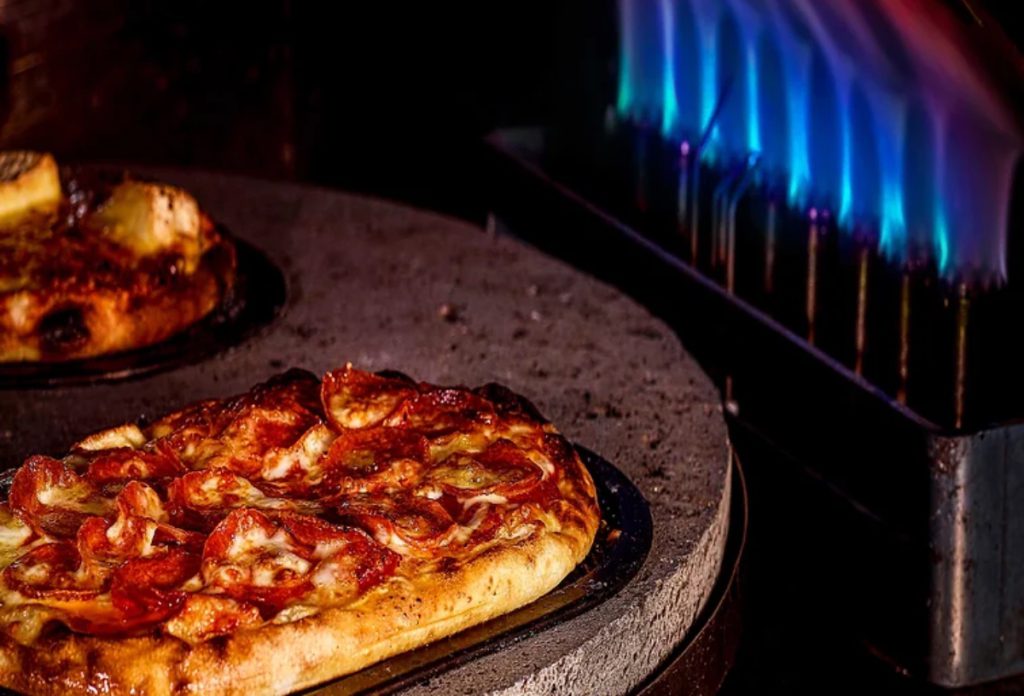 GOPIZZA’s pizzas are baked in the GOVEN 2.0, an upgraded version of its automated oven/ Image Credit: GOPIZZA
GOPIZZA’s pizzas are baked in the GOVEN 2.0, an upgraded version of its automated oven/ Image Credit: GOPIZZAApart from the oven and dough, the company developed a U.S. patented AI-powered smart topping table in 2019, which identifies and selects topping ingredients in real time. It also utilises an automated system that slices its pizzas into GOPIZZA’s signature shape and keeps them warm until they are served to customers.
By incorporating these cutting-edge innovations, every pizza can be prepared within four to five minutes, as compared to a conventional pizza, which will take a minimum of 10 to 15 minutes.
A franchise store in a regional mall can make up to S$4,000 daily
With the technology that it has developed, GOPIZZA outlets can operate at a fraction of the real estate footprint as well as labour and rental costs of larger stores.
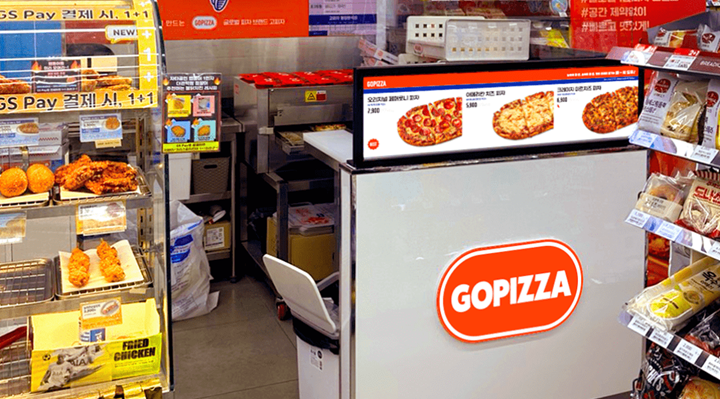 A GOPIZZA kiosk located within GS25, a South Korean convenience chain/ Image Credit: Supplied
A GOPIZZA kiosk located within GS25, a South Korean convenience chain/ Image Credit: SuppliedIn Singapore and South Korea, many of the pizza chain’s outlets are situated within convenience stores, petrol stations, and cinemas. “They are also compact at 50 square feet and only require two employees to run the operations,” Jay adds.
This “shop in shop” strategy allows each outlet to immediately absorb existing footfall, reducing investment costs and operating expenses.
In fact, close to 40 per cent of GOPIZZA’s stores in Singapore broke even on an EBITDA basis in their first six months of operations. According to the CEO, a franchise store located in a regional mall in Singapore can make S$3,000 to S$4,000 in sales per day.
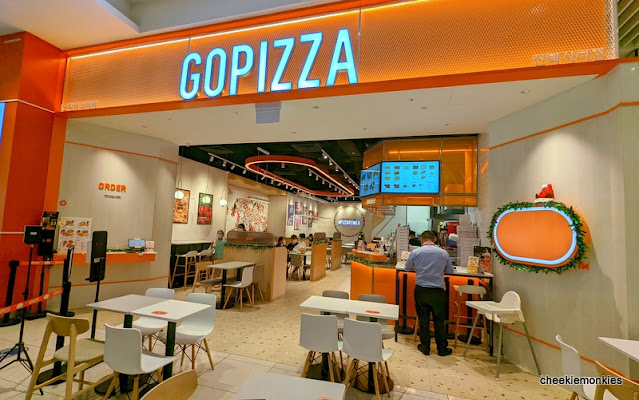 GOPIZZA’s flagship outlet at Suntec City/ Image Credit: cheekiemonkies
GOPIZZA’s flagship outlet at Suntec City/ Image Credit: cheekiemonkiesGOPIZZA also operates larger outlets, with store sizes averaging 200 square feet and 500 square feet in Singapore and South Korea respectively. In markets where labour and rental are more affordable, such as India, it operates more spacious stores.
We have a very small, efficient, flexible modular kitchen that could be applied in any store format. We don’t operate a strict grab-and-go model to ensure we cater to a diverse customer base, accommodating to those who prefer dining in, takeaways, or deliveries.
– Jay Lim, founder and CEO, GOPIZZAAccording to Jay, this balanced model has been instrumental in the pizza chain’s ability to navigate the challenges posed by the COVID-19 pandemic, “setting them apart from cloud kitchen brands that struggled during the same period”.
Success doesn’t come easy
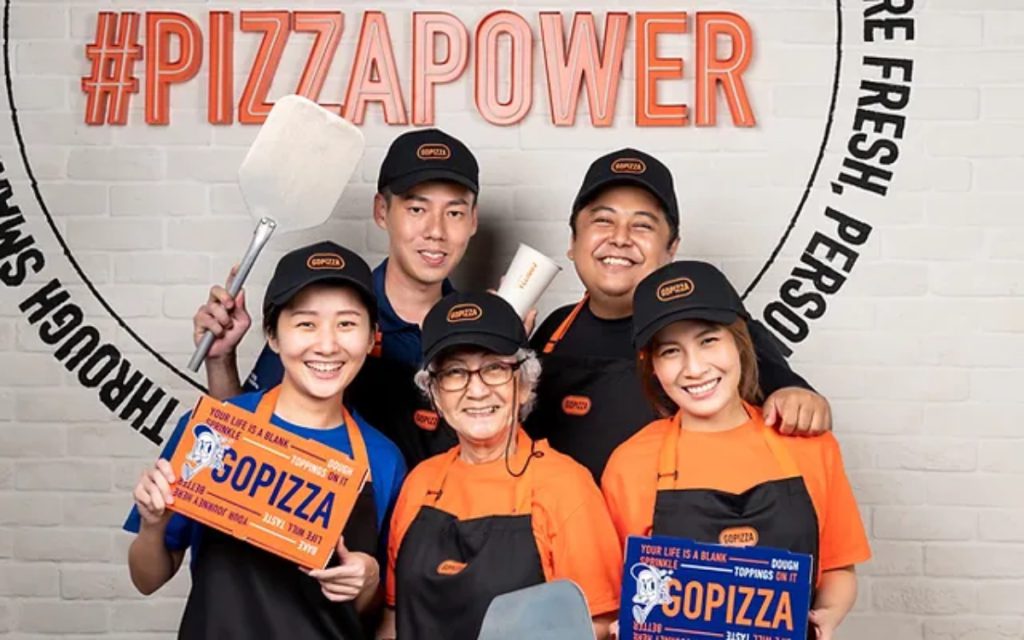 The GOPIZZA team/ Image Credit: GOPIZZA
The GOPIZZA team/ Image Credit: GOPIZZAHowever, the advancements in GOPIZZA’s operations hasn’t been without its hurdles. Venturing into AI and robotics – areas that are completely distinct from the food ingredient and franchise businesses – proved to be a struggle.
“The integration of AI and robotic engineers into a company culture centred around pizza was complex,” said Jay. It took four years to develop a “synergistic integration” between GOPIZZA’s AI developers and its restaurant department.
The company was also hindered by high costs, inferior quality, and limited production when it came to the initial development of its parbaked dough. However, these hurdles were overcome through extensive testing and factory upgrades.
Currently, GOPIZZA operates three factories in Korea, including a Future Lab dedicated to AI and robots, a GOPIZZA Parbake Innovation Center for dough R&D and production, as well as a tech centre that focuses on the R&D and production of its automated ovens.
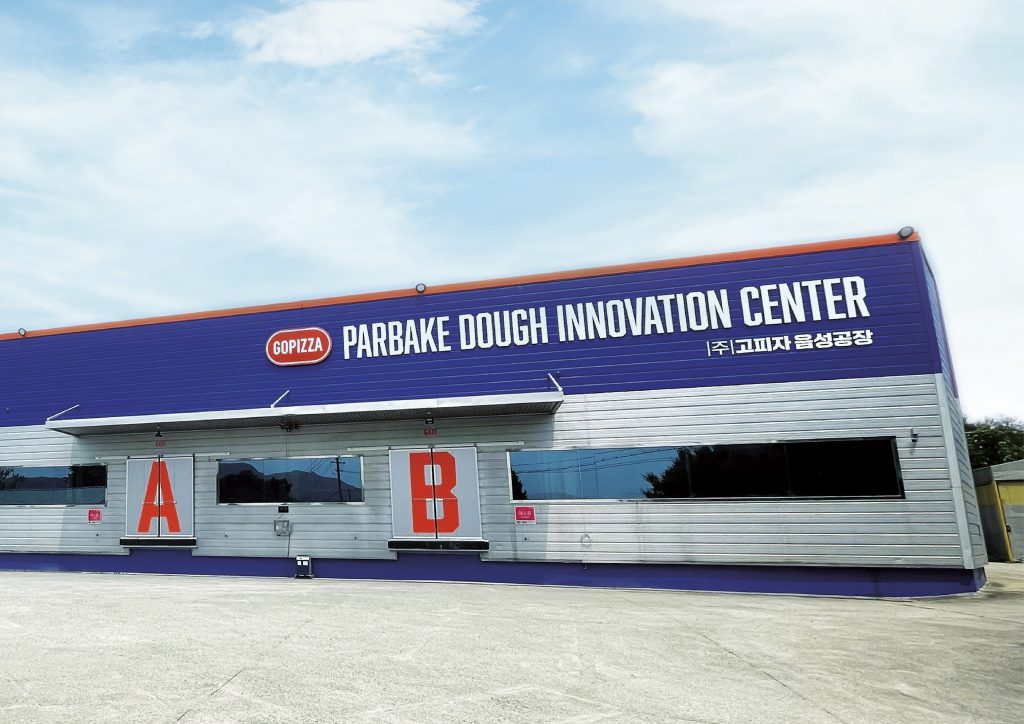 The GOPIZZA Parbake Innovation Center/ Image Credit: GOPIZZA
The GOPIZZA Parbake Innovation Center/ Image Credit: GOPIZZAApart from technological and R&D-related challenges, Jay’s youth and lack of experience in the F&B field also posed challenges in scaling the business.
Despite having a Master’s Degree from the Korea Advanced Institute of Science and Technology and internship experience under his belt, he shared that the journey of establishing and growing GOPIZZA was an “endless pursuit of problem-solving, with new challenges emerging every day”.
I remember managing taxes, HR, finance, regulations—things that you don’t really learn from school and daily ‘business admins’ were significant hurdles.
– Jay Lim, founder and CEO, GOPIZZAHowever, the CEO said that he managed to tackle these obstacles through “persistence”. “I personally find ‘grit’ or ‘perseverance’ to be the most important trait of an entrepreneur or any successful person.”
GOPIZZA has raised US$50 million to date
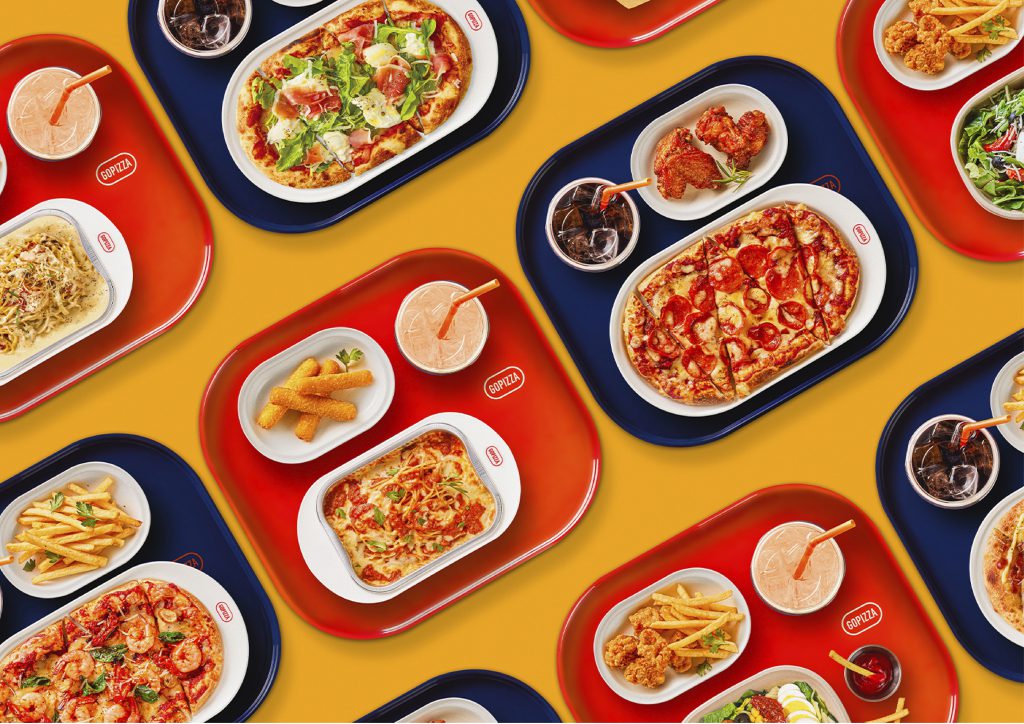 Image Credit: GOPIZZA
Image Credit: GOPIZZAThe global potential of GOPIZZA’s business model, coupled with its innovative approach in the F&B industry and technological strides, has enabled it to garner significant investor interest.
To date, the company has managed to raise around US$50 million and is backed by some of the most prominent venture capitals in Korea, including Capstone Investment and DSC Investment, both of which are listed on the Korean Stock Exchange.
This funding has been crucial in fuelling its expansion efforts and driving innovation in the pizza industry, particularly in the APAC region.
The technology we’ve developed has reached its commercialisation level, and we significantly reduced the production cost of key ingredients, particularly the parbaked dough. Our stores, both in Korea and overseas, have also ramped up and stabilised.
– Jay Lim, founder and CEO, GOPIZZA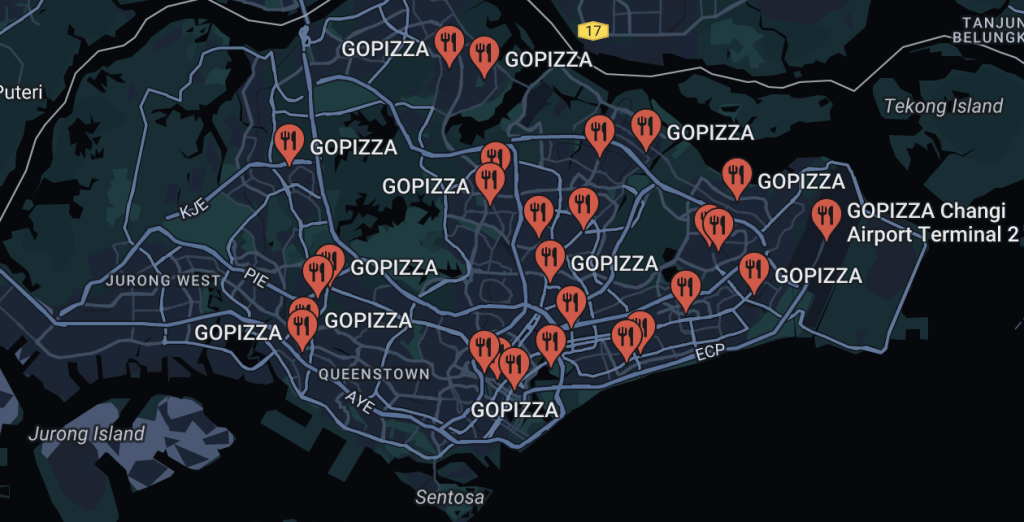 GOPIZZA outlets in Singapore
GOPIZZA outlets in SingaporeGOPIZZA’s pace of expansion reminds some of Flash Coffee, a “tech-enabled” coffee chain that filed for a voluntary winding up in Singapore late last year. At its peak, Flash Coffee opened three stores a week, which ultimately led to its failure in the market.
However, when asked about GOPIZZA’s growth strategy, Jay confidently shared that the firm’s growth is sustainable, with a financial runway extending beyond five years and plans to reach global break-even by the end of this year.
Our business model emphasises store-level profitability, ensuring each store contributes positively to our bottom line. This approach, coupled with the cumulative positive impact of our expanding number of stores, underpins our sustainable growth strategy.
– Jay Lim, founder and CEO, GOPIZZAGOPIZZA wants to establish 10,000 outlets globally
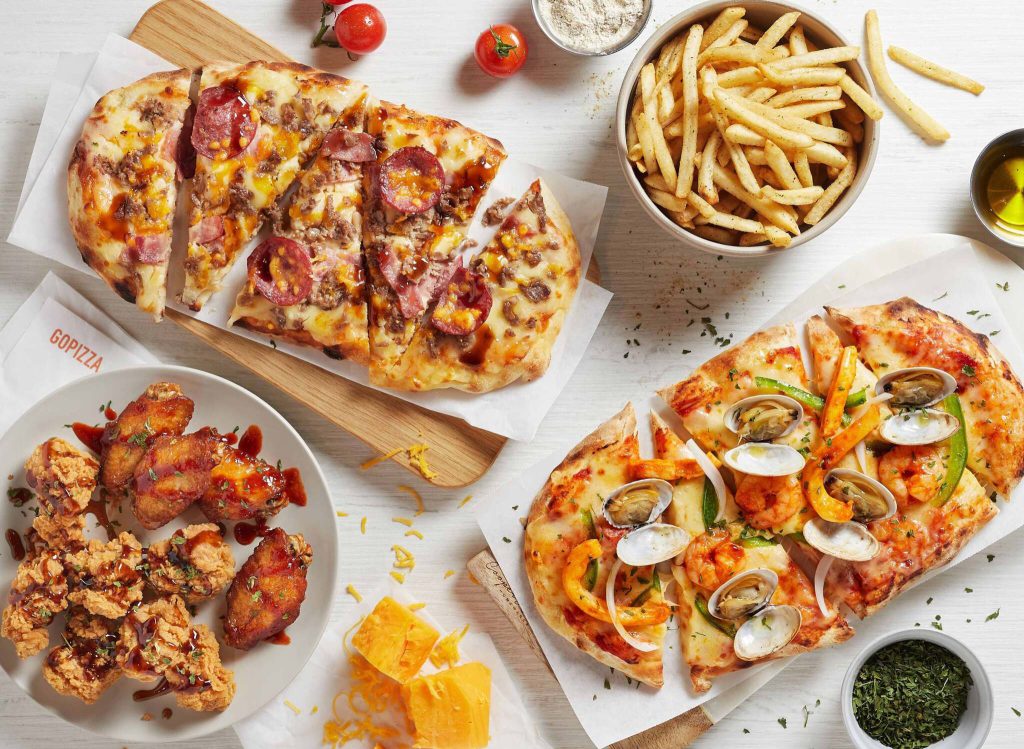 Image Credit: GOPIZZA
Image Credit: GOPIZZALooking forward, GOPIZZA aims to secure a top three position in the pizza market within the next three years in all the countries it operates in and expand its footprint to new regions, particularly in Southeast Asia. The pizza chain is also “eyeing opportunities” in North America, and potentially the Middle East.
Beyond geographical expansion, GOPIZZA is also looking to diversify its presence across various verticals by replicating its successful partnerships in Korea with convenience stores, gas stations, and cinemas, in other countries.
For instance, in Singapore, the company has partnered with Cathay Cineplexes, mirroring its collaboration with Korea’s CGV, the region’s largest multiplex cinema chain. “We’re also in talks with a major convenience store chain to introduce a model akin to our GS25 partnership outside Korea,” Jay added.
Ultimately, it aims to achieve exponential growth through its strategic partnerships and cement its status as the “pizza everywhere company” by establishing 10,000 stores globally in the next five to ten years.
With our unique oval-shaped pizzas, we aim to transform pizza into a food that’s as accessible and convenient as hamburgers are at McDonald’s, in terms of pricing, speed, portion size, and dining companions.
We envision a future where GOPIZZA becomes a go-to choice for quick lunches or snacks, fundamentally changing how people think about pizza.
– Jay Lim, founder and CEO, GOPIZZAFeatured Image Credit: GOPIZZA

 ValVades
ValVades 


























.jpg&h=630&w=1200&q=100&v=154b70b92d&c=1)





